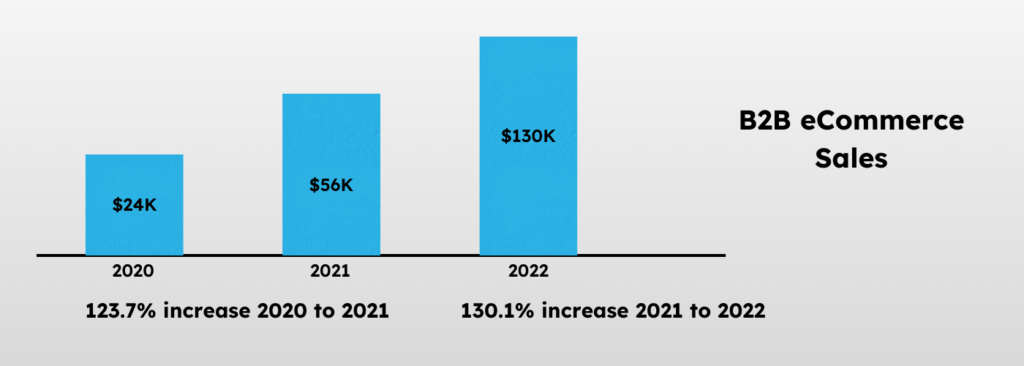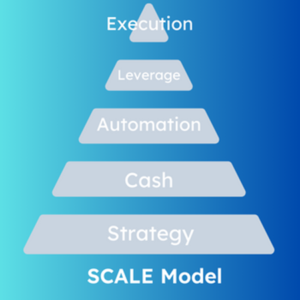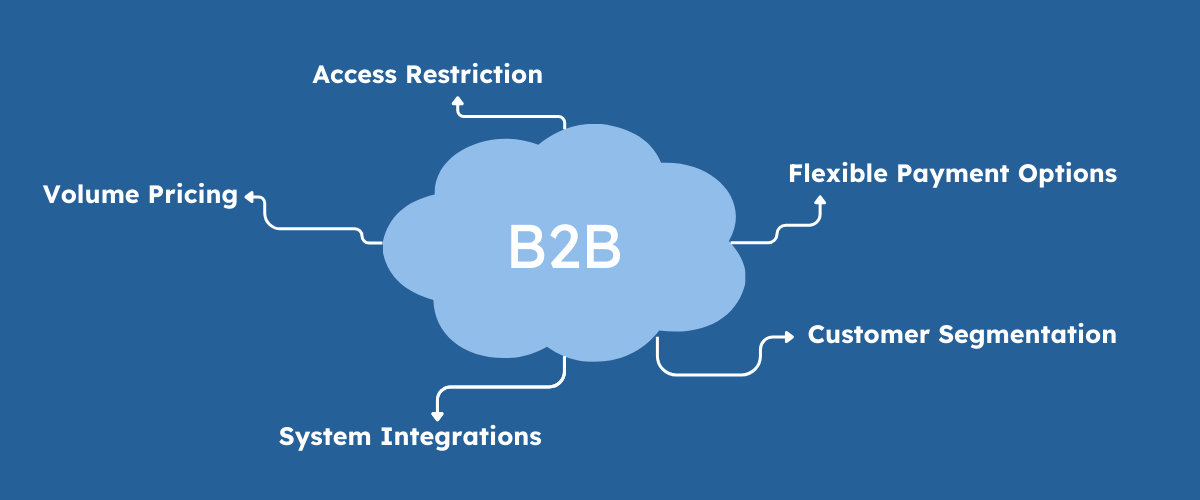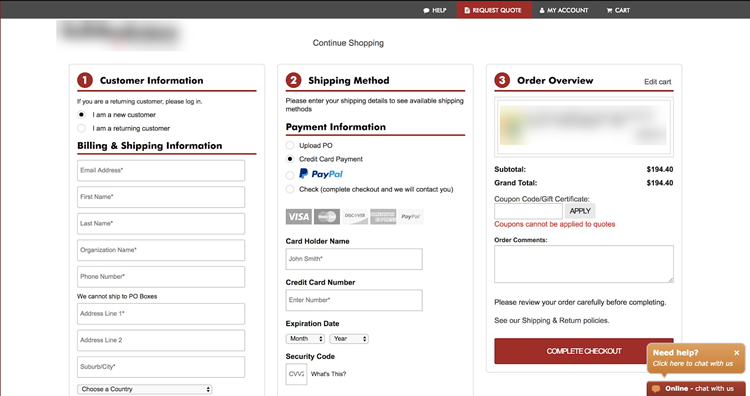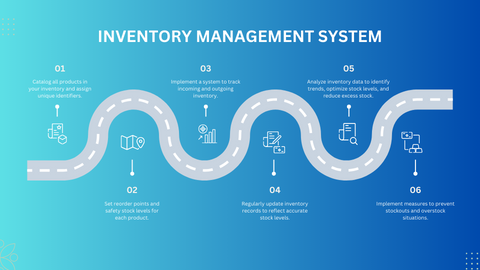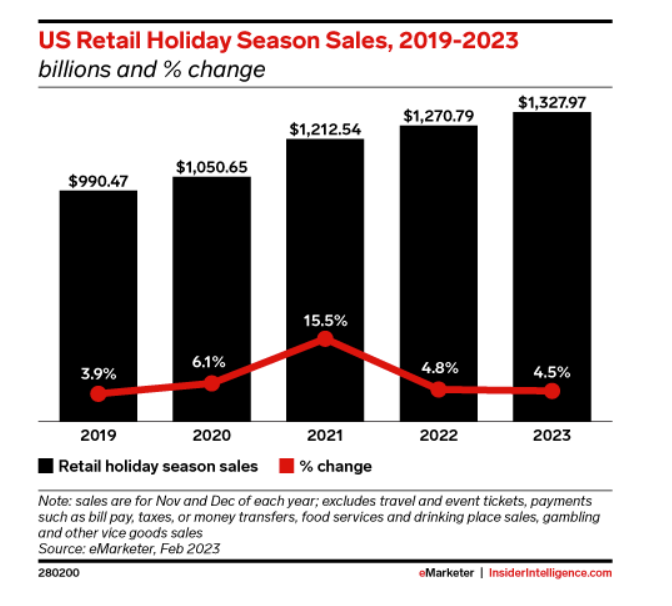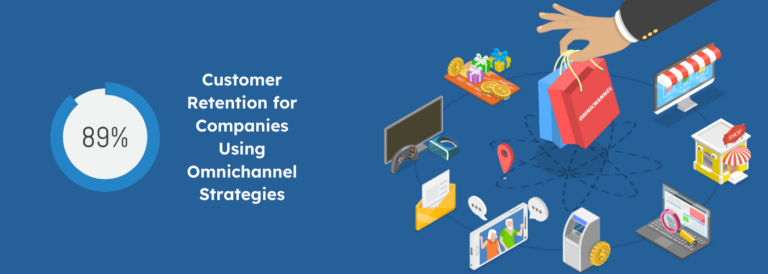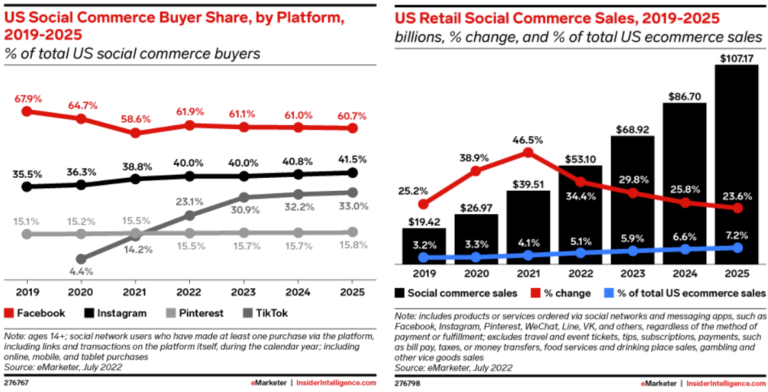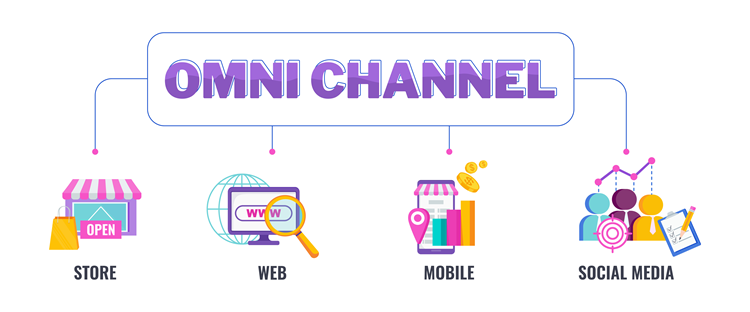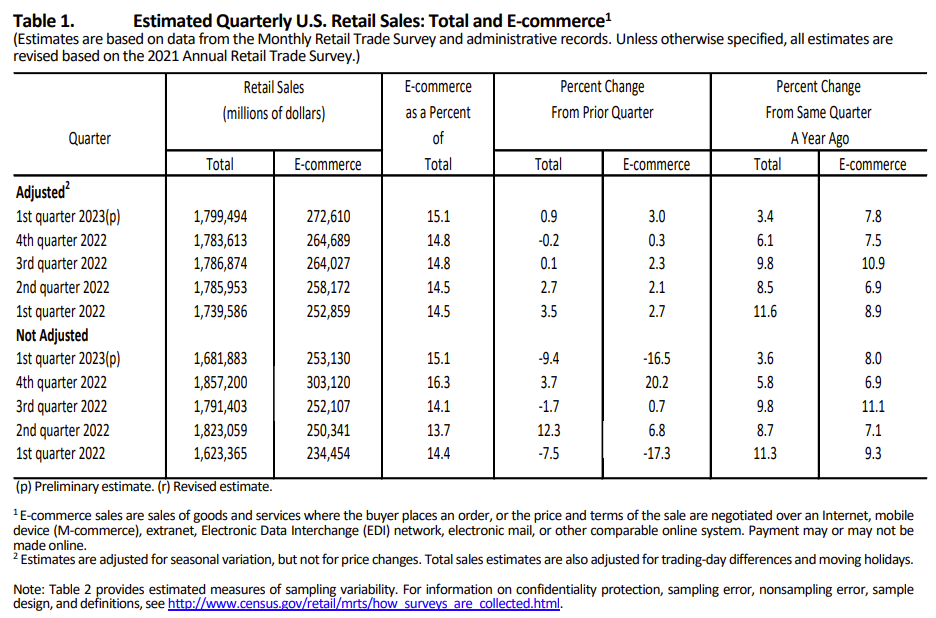The Evolution of Commerce
The evolution of commerce emerged as a solution to the evolving demands of online retail. With their inflexible structures tightly coupling the front-end user interface with the back-end functionality, traditional commerce models struggled to keep up with consumer expectations. As a result, business owners started exploring alternative approaches that could provide the required flexibility and agility to adapt to new technologies and customer preferences. This led to headless and composable commerce, two revolutionary approaches transforming the e-commerce landscape.
Traditional Commerce and its Limitations
Traditional commerce often faces challenges in keeping up with the evolving needs of modern businesses. With customers expecting more, traditional platforms struggle to deliver consistent experiences across sales channels like mobile devices, social media, and IoT devices. Furthermore, they don’t have the scalability and flexibility needed to match the ever-changing demands of the digital market. Moreover, the closely connected framework of conventional platforms presents difficulties adjusting to new technologies, incorporating third-party services, and personalizing the user experience. Businesses are turning to headless and composable commerce to overcome these restrictions, providing more flexible and customizable options.
Understanding the Basics: Headless Commerce
Headless commerce has become a popular solution due to the constraints of traditional commerce systems, giving businesses the freedom to expand to different sales channels and technologies. Decoupling the presentation layer from the commerce platform allows businesses to provide personalized experiences across various channels. This method enables companies to easily adjust to evolving customer demands, enhance user experiences, and stay competitive in the market.
The Evolution of Headless Commerce
Headless commerce has made significant strides thanks to technological advancements and the growing demand for versatile e-commerce systems. As online shopping soars, traditional commerce systems have struggled to keep pace. The increased popularity of headless commerce can be attributed to businesses requiring a flexible infrastructure to provide outstanding digital experiences on various platforms. The ongoing advancement of new technologies, such as headless commerce platforms, content management systems (CMS), and application programming interfaces (APIs), has played a crucial role in developing headless commerce.
What is Headless Commerce?
Headless commerce refers to an architecture that provides content through APIs, where the front-end presentation layer (the “head”) is decoupled from the back-end commerce functionality. Unlike traditional monolithic e-commerce platforms, headless commerce allows businesses more control over their digital experiences without being confined to a specific template or theme. With headless architecture, content creators and developers can work independently, reducing constraints and increasing productivity.

Key Features of Headless Commerce Platforms
To fully understand the benefits of headless commerce, it’s important to delve into its key features. Headless commerce platforms offer businesses a solution that empowers them to tailor their commerce experiences to their needs.
Flexibility and Agility
Headless commerce platforms provide a variety of crucial features, with a standout being their capacity for flexibility and customization. Businesses can implement changes and updates autonomously when the front-end presentation layer is separated from the back-end functionality. Full control over the user interface and design allows for customization beyond pre-set templates or themes.
They can also customize the front-end experience to match their brand identity, user preferences, and business needs. By separating the front-end and back-end, businesses can try new technologies, adapt to customer needs, make changes rapidly, deploy changes efficiently, and offer a smooth and customized user experience on multiple platforms.
Customization and Personalization
Headless commerce enables businesses to develop customized and personalized user experiences. They can boost engagement and drive conversions by carefully selecting front-end technologies and creating interfaces that connect with their target audience. They can incorporate emerging technologies and adjust to changing trends. Businesses can innovate and create various user experiences across different channels without disrupting backend processes.
Scalability and Performance
When you separate the front-end from the back-end, it enables each component to scale independently according to demand. Ensuring the system can manage higher traffic and transaction volumes without sacrificing performance or user experience. Headless commerce solutions are designed to easily scale, ensuring consistent performance and seamless online shopping experiences, no matter the number of users or sales channels. Headless commerce platforms have a decoupled architecture that allows businesses to easily add or change front-end applications, channels, or touchpoints without impacting the system’s performance. Ensuring scalability allows businesses to provide a smooth experience, even when facing high shopping seasons or sudden increases in online traffic.
Seamless Integration Capabilities
Headless commerce platforms have a significant advantage in terms of their integration capabilities. Businesses frequently face challenges when attempting to connect with different systems, services, or marketing tools, unlike what is typically seen with traditional commerce platforms.
Headless commerce platforms provide strong integrations that make connecting various content management systems (CMS), customer relationship management (CRM) platforms, third-party services, and marketing tools easier for businesses. Through regular API calls, headless commerce platforms help businesses simplify their e-commerce processes, boost productivity, and deliver a smooth customer experience on various channels.
Businesses can make the most of their commerce platforms, interact with customers, and stay current with market trends thanks to this seamless integration.
Understanding Composable Commerce
While headless commerce provides businesses with greater flexibility and customization, composable commerce offers a modular approach to building tailored commerce experiences.
What is Composable Commerce?
Composable commerce allows businesses to craft distinctive commerce experiences by breaking down commerce features into smaller, reusable components. This architectural approach emphasizes the importance of modularity, interoperability, and the ability to mix and match commerce elements to meet unique business needs.
Composable commerce is all about embracing customizable and adaptable commerce solutions. Companies can use composable commerce platforms to integrate new technologies quickly, add extra features, and easily adapt to market changes. Embracing a microservices-oriented strategy allows these platforms to help businesses surpass their competitors in the digital market by providing agility, scalability, and flexibility.
Benefits of Adopting Composable Commerce
Choosing composable commerce offers many benefits for businesses looking to enhance their online presence, deliver exceptional user experiences, and surpass their rivals. Let’s talk about some of the key advantages of composable commerce:
Enhanced Digital Experience: Composable commerce platforms enable businesses to create extremely flexible and customized digital experiences for their customers. By using modular components, businesses can tailor the user interface, content, and functionality to meet individual customer preferences, leading to improved digital experiences.
Expanded E-commerce Functionality: Utilizing specialized solutions from different vendors allows businesses to access the newest e-commerce technology innovations easily. Businesses can effortlessly modify, personalize, or eliminate features and functionalities with composable commerce platforms to stay current with evolving customer demands and market trends. This agility allows companies to stay competitive by rapidly adopting new features, functionalities, and emerging trends in the market. They are not reliant on a single vendor for their entire commerce infrastructure.
Ease of Use: Composable commerce platforms make managing and operating online commerce easy with a user-friendly interface. Collaboration is made easier with a modular structure, allowing business users, developers, and content creators to collaborate, implement updates, and introduce new features seamlessly. Composable commerce platforms make it easy for businesses to focus on their strengths and deliver exceptional digital experiences.

Elements of Composable Commerce Platforms
Composable commerce platforms have several key elements that enable businesses to build, compose, and customize their commerce experiences tailored to their specific needs.
API-First and Microservices Architecture
API-first and microservices architecture are core elements of composable commerce platforms. Microservices architecture allows businesses to break down commerce functionalities into smaller, standalone services, each responsible for a specific task. These services can be easily integrated, updated, or replaced, enabling businesses to compose and recompose commerce experiences as needed. The API-first approach enables different components to communicate with each other, facilitating interoperability and seamless data exchange. These elements provide businesses the flexibility, scalability, and agility to build, adapt, and optimize their ecommerce system.
Modularity and Interoperability
Composable commerce platforms are built on the core principles of modularity and interoperability. Businesses can break down commerce functionalities into smaller, reusable components using a modular approach. You can combine these components to create personalized commerce experiences.
This modular approach offers the benefit of easily integrating, extending or updating components without requiring time-consuming and costly platform-wide updates. When everything works together seamlessly, it guarantees a smooth integration of different components, systems, and technologies.
Businesses can leverage their current IT infrastructure, easily integrate third-party services, and stay flexible for future advancements. Furthermore, they can create customized, flexible, and interconnected commerce systems using composable commerce platforms to meet their needs.
Customer-Centric Approach
Composable commerce platforms place the consumer experience at the center of their customer-centric approach. By taking advantage of the modular and customizable characteristics of these platforms, businesses can personalize the shopping experiences of each consumer. By implementing this approach, organizations guarantee that they can perpetually provide outstanding experiences across many touchpoints, channels, and devices; in doing so, they ultimately cultivate consumer loyalty, engagement, and satisfaction.
Omnichannel experiences can be delivered by businesses with the assistance of composable commerce platforms, enabling consumers to make purchases and engage with the brand via their preferred channels. Through the prioritization of customer-centricity, these platforms allow businesses to improve customer service, exceed expectations, and foster enduring connections with their intended demographic.
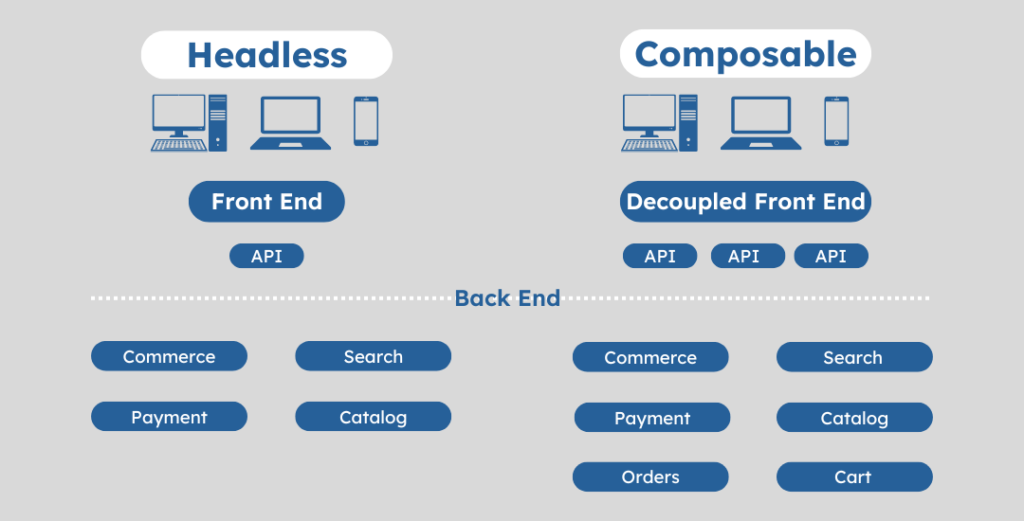
Headless Commerce vs. Composable Commerce
Now that we have explored the fundamentals of headless and composable commerce let’s compare these approaches, focusing on their differences in architecture, flexibility, customizability, scalability, and integration capabilities.
Differences in Architecture
One of the primary differences between headless commerce and composable commerce lies in their underlying architectures.
- Headless commerce architecture separates the front-end presentation layer from the back-end commerce platform, allowing greater flexibility and customization. Businesses can experiment with front-end technologies like Progressive Web Apps (PWAs), native mobile applications, or custom user interfaces without impacting the underlying commerce functionality.
- In contrast, composable commerce architecture emphasizes modularity, breaking commerce functionalities into smaller, reusable components. Composable commerce offers a more granular level of customization, allowing for even finer-grained control and flexibility in assembling the commerce solution.
Comparison of Flexibility and Customizability
Headless and composable commerce offer businesses greater flexibility and customizability than traditional commerce approaches.
- Headless commerce separates the front-end presentation layer, enabling businesses to design and develop fully customized user interfaces aligned with their brand identity. However, the backend infrastructure may still be monolithic, which can limit scalability and agility.
- Composable commerce goes a step further, allowing businesses to compose and recompose commerce experiences using pre-built components, providing a high level of versatility in building tailored user experiences. This modular approach enables businesses to build tailored commerce experiences, with each component serving a specific purpose.
Scalability: Headless vs. Composable
Scalability is an important consideration for businesses operating in the digital landscape.
- Headless commerce platforms offer inherent scalability, designed to handle high volumes of online traffic, ensuring consistent performance even during peak shopping seasons. These platforms manage high volumes of online traffic, guaranteeing reliable performance even during peak shopping periods. Businesses can easily scale the presentation layer independently from the back-end commerce functionality. This allows them to manage traffic spikes and meet user demand efficiently.
- Composable commerce platforms also provide scalability, enabling businesses to add, modify, or remove components as needed, ensuring flexible growth and expansion. However, the decoupled nature of headless platforms gives them a distinct advantage in scalability, as changes can be made to the front-end without affecting the back-end commerce functionality, making them more adaptable and efficient for handling growth.
Comparing the Integration Capabilities
Headless and composable commerce platforms excel in their integration capabilities, making it easier for businesses to connect and interact with various systems, services, and technologies.
- Headless commerce platforms offer seamless integration with different platforms and channels, enabling businesses to improve efficiency and streamline their e-commerce operations.
- Composable commerce platforms, with their modular nature, simplify integration by providing pre-built components that can be interconnected to create customized commerce experiences. These integration capabilities allow businesses to leverage existing technologies, connect with third-party services, and optimize their commerce platforms for a seamless omnichannel experience.
Choosing the Right Commerce Model for Your Business
When choosing the right commerce model for your business, several factors need to be considered. This decision is crucial, as it will impact your ability to deliver exceptional user experiences, meet customer expectations, and drive business growth.
Factors to Consider Before Choosing
Before selecting a commerce model, it’s important to consider several factors, including your business logic, specific tasks, and tech stack. A thorough evaluation of your business needs, long-term goals, and customer expectations will help determine which commerce model aligns best with your overall strategy. Consider the level of technical expertise required to implement and maintain the chosen model and the potential time and resources needed for development and updates. Selecting a commerce model that can easily integrate with your existing tech stack is essential, ensuring seamless collaboration between different systems, services, and channels.
Tailoring the Commerce Model to Your Business Needs
Customizing your commerce model based on your business needs is essential for achieving the best results. To succeed, it’s important to grasp who your audience is, what they like, and what they aim for, then tailor your business model to suit your requirements.
If your business specializes in user interface design and developing visually attractive buying experiences, headless commerce could provide the flexibility and customization you seek.
If your firm needs agility, scalability, and the capability to deploy new features rapidly, composable commerce may be more suitable.
Customizing the commerce model to fit your business requirements can improve user experiences, simplify internal processes, and create a shopping experience that resonates with your customers.
When to Opt for Headless Commerce?
Headless commerce is perfect for companies that value adaptability, personalization, and providing smooth experiences on multiple sales platforms.
If your company needs to design distinct user interfaces for different devices and customer preferences, opting for a headless commerce strategy provides the required flexibility. Furthermore, headless commerce platforms enable faster time-to-market capabilities, allowing businesses to launch new features, updates, and campaigns quickly, providing a competitive edge in the digital marketplace.
Headless commerce also excels in mobile commerce, allowing businesses to optimize user experiences specifically for mobile devices, enabling a headless future of frictionless mobile shopping experiences.
When is Composable Commerce the Better Choice?
Composable commerce is an ideal choice when businesses require a highly adaptable architecture and the ability to integrate new features easily, and marketing teams need greater control over commerce experiences.
If your business requires frequent updates, personalized customer experiences, and rapid adoption of new technologies, composable commerce platforms offer the flexibility you need.
Composable commerce’s pre-built components and customizable features allow marketing teams to easily develop personalized experiences, therefore saving time and resources. This approach enables marketing teams to investigate, create, and design unique consumer experiences, thereby improving customer interaction and loyalty.
Conclusion
In conclusion, the rise of Headless and Composable Commerce is a big step forward for e-commerce architecture. It gives companies unmatched adaptability and growth potential. Headless design keeps the front-end presentation separate from the back-end infrastructure. This lets new ideas come up quickly and offers experiences across all channels. One step further is Composable Commerce, which enables businesses to build their commerce stack with top components. This makes it more flexible and easier to customize.
It’s important to think about your organization’s goals, technical skills, and its needs for growth when picking the right model for your business. Headless Commerce is great for companies that want to set up quickly and give users a smooth experience across all channels. Composable Commerce, on the other hand, is very flexible and lets companies tailor solutions to their specific needs. Ultimately, choosing between these models comes down to ensuring that your technology infrastructure is in line with your long-term strategic goals. This will keep your commerce design flexible and adaptable in the digital world, which is always changing.
Other Articles You May Be Interested In











